My Sister Uninvites Me From Her Wedding but Still Expects Me to Give Her Money


The cylinder on the end of a cable is sitting there, useless as it might seem. In fact, this is a ferrite bead that assists with many electrical wires to reduce electromagnetic interference. Electrical wires act like unintentional antennas, broadcasting the EMI.
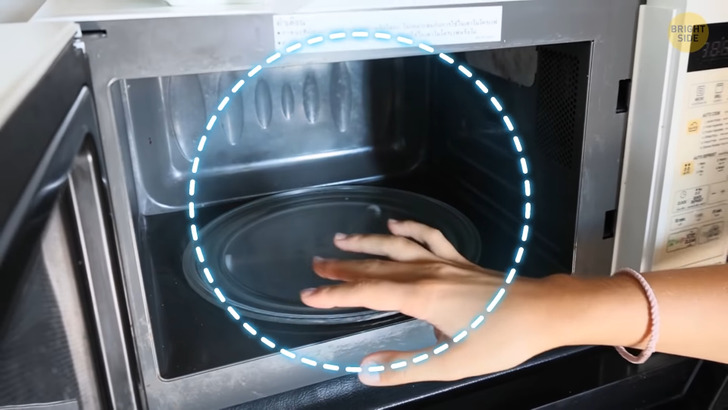
There’s a reason why the spinning wheel inside the microwave is circular. A circular object will evenly distribute the heat as opposed to rectangular and square ones. When you place containers of these shapes inside, the energy is focused on the corners rather than spread evenly like in a round container.
The temperature gauge on a toaster is commonly used to determine how crisp you like your toast. But the other, more specific use for the gauge was for the different types of bread. White and sweet types of bread heat up much faster as opposed to heavier brown and rye ones. The older bread is, the more time it will need in the toaster to ensure the golden-brown result you’re looking for.
Most ovens give you the option of leaving the door ajar when broiling a dish inside. You probably think the goal here is to help cool down the oven after use. In reality, its purpose is to focus on cooking the top of the dish and to ensure a crusty layer. Controlling the buildup of heat and steam by releasing it through the slightly ajar door gives you the desired result without cooking the entire dish to a crispy end.
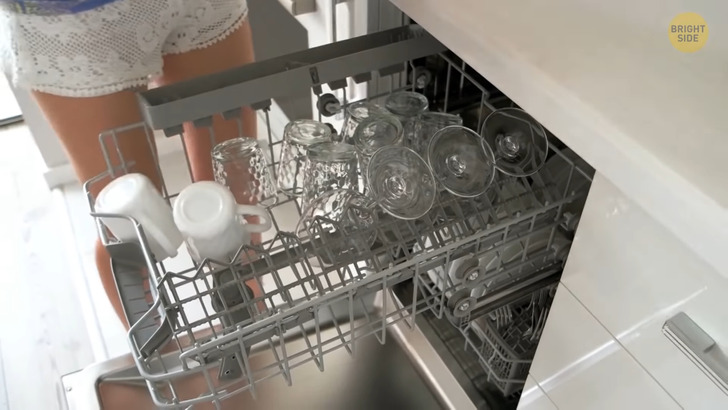
You’ve probably noticed that your dishwasher has specific areas for different types of cutleries and dishware. But all the dishware pieces should be facing towards the center and not all in one direction.
What types of food were on the plates will also determine where they should be located in the racks. As the middle of the machine gets the strongest spray, carb-based stains from tomatoes and potatoes should be placed there. The detergent is more focused on the outside during the clean, creating a waterfall-like cleanse. That’s why protein-based stains, like from eggs, for example, should be stacked there.
Ceiling fans push cool air down on a hot day, circulating the room. But they can serve you during the winter just as effectively if you flick that switch on the side or use the pulley. So if you want to save some money on heating and try to quickly warm up your room on a cold day, turn the fan on. It will push the air up and spread the warm air around, more effectively warming the room up.
Do you still use sticky notes instead of those fancy new apps on all possible gadgets? Welcome to the club! Regardless of what you use them for, they can annoyingly curl up. If you’ve had this issue, it’s because you’ve peeled them from the bottom upwards. Doing it this way causes the curling. Peeling them from the side will ensure they remain flat, ready to remind you of your daily tasks.
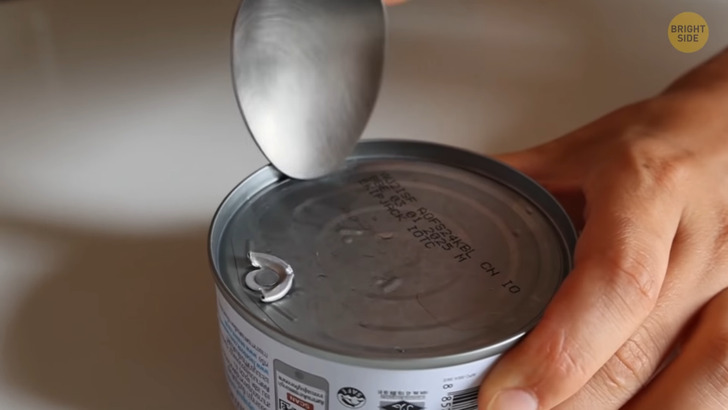
Did you know that can openers weren’t invented until 50 years after preservation cans had been readily available? So how would it be possible to open a can? There are a couple of alternate methods just in case you have misplaced your trusty opener.
All you need is a metal spoon. Set the can down on the counter, hold onto it firmly, and grasp the head of the spoon tightly. Apply pressure and vigorously rub the edge of the can’s top over a small area. It takes time, but as you continuously rub, a small indentation soon opens a hole. Once the hole is wide enough for the spoon’s tip, pry the lid upwards and keep going along the edges until you can finally access the hard-earned meal within.
Most toilets rely on water pressure and gravity to function, so a power outage will not affect them. But if yours does need electricity to function, you must be worried about using it when the power is out. The good news is the power is only used to fill the toilet and not to flush it. As the flushing mechanism will still work, open the toilet tank and pour in a couple of gallons, and you’re free to flush away whatever you need to.
Blockages in shower drains occur over a long period of time. It’s inevitable. We lose 50 to 100 hairs a day, and many of them will endeavor to reside within our shower drains. Hair only forms the foundations of the blockage, and this attracts the buildup of various other things. A great life hack is to use your vacuum cleaner and put the nozzle in the hole once removing the plug. Apply a wet cloth around the nozzle, ensuring air cannot escape. The vacuum will suck up the blockages a lot easier. This will help avoid any extra costs from plumbers, as they themselves use this technique.
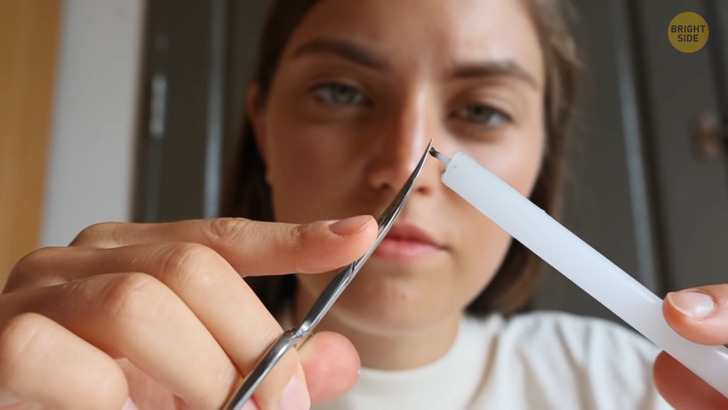
To make your candles last longer, trim their wicks multiple times and keep them as far away from water and moist as possible. It will guarantee that your candle’s wax stays firm and steady and continues to burn slower for a longer period of time.
The empty space between the panes in the oven door is there for a reason. You can stick a brush in there to clean the oven door glass. It’s easy to access this space through the bottom of the door. Open the lower shelf, then push the brush through the hole.
While you’re parking in a garage, you might find it difficult to determine how close to it you need to be. Not all cars have sensors ensuring you keep the right distance before the bumper makes an indentation on the wall. Applying a rope with a tennis ball from the ceiling at the right distance will help you learn the best distance to park from the wall.
We’ve all been told to loosen a lock with WD-40 or lubricant. Yes, we all know we should have these around the house. But in case you don’t, a great alternative is drawing with a gray lead pencil along the edges of the key and then putting it into the lock. Continue doing this until the keyhole has been adequately lubricated and the key functions smoothly.
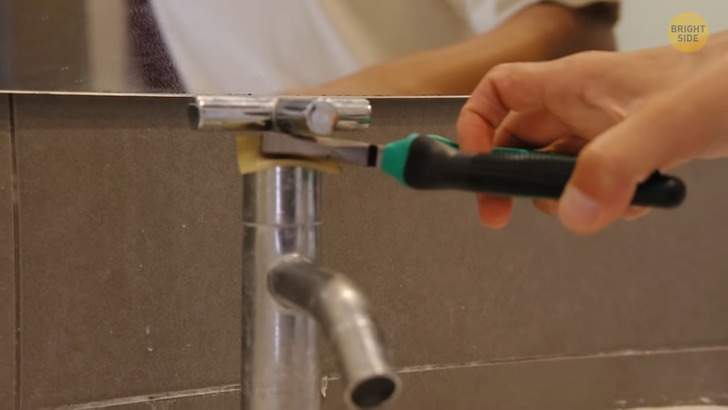
Pliers are prone to damage when you use them to adjust faucets and showerheads, and are also difficult to grip. Take a couple of pieces from the end of an old garden hose and attach them to the jaws of the plier. You’ll find a huge improvement with grip and will avoid wear and tear.
You can find a good use for discarded rubber for different things around the house. When fed up with tightening or loosening with a screwdriver, try using a simple rubber band. Place part of it into the screw grip, and the screwdriver will have far greater traction. Moving cement blocks isn’t safe for your lower back. Even with a wheelbarrow, it can be a risky process to place the cement onto the ground without causing damage.
3 simple cylinder pipes can make a world of difference, regardless of the size of the block. Try lifting the edge onto the first pipe with a pry bar, then pushing and maneuvering as you gradually direct the three pipes towards the desired location. Just make sure you’re not doing this on a slope. That first strike upon a nail can be a great success or will result in a throbbing thumb.
A bobby pin is perfectly shaped to hold the nail in place, allowing for your hand to be clear out of harm’s way and for you to strike the nail without fear. Use a crayon instead of a pen or pencil while working with a wet saw to ensure the markings are not removed. They will also be easier to see under the murky water.
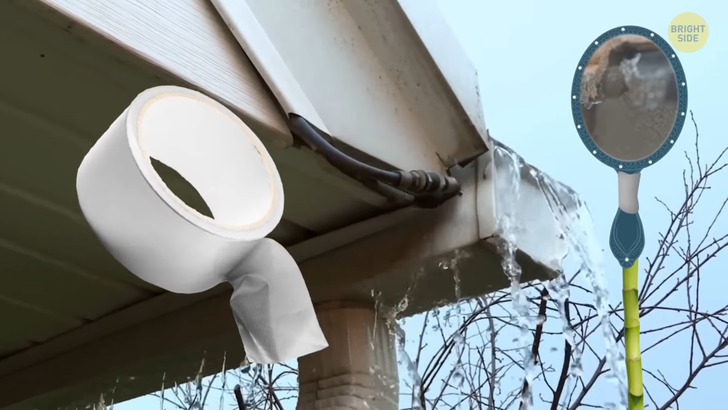
Checking the drains on the roof and determining when they need to be cleaned can take a lot of time. Using duct tape, attach a mirror on the end of a long broom and review whether the drains need to be cleaned. To further assist with your balance as you check on the gutters, attach a pair of old trainers to the end of the ladder. The spread of the shoe and its grip will ensure a further level of safety.
Liquid caulk normally comes in huge tubes, so you can never use it all at once. The hardened tips of liquid caulk create blockages. Grab a used cork and drill through it to make a perfect lid, concealing the liquid caulk. Now it’s ready to be used again with no blockages.











